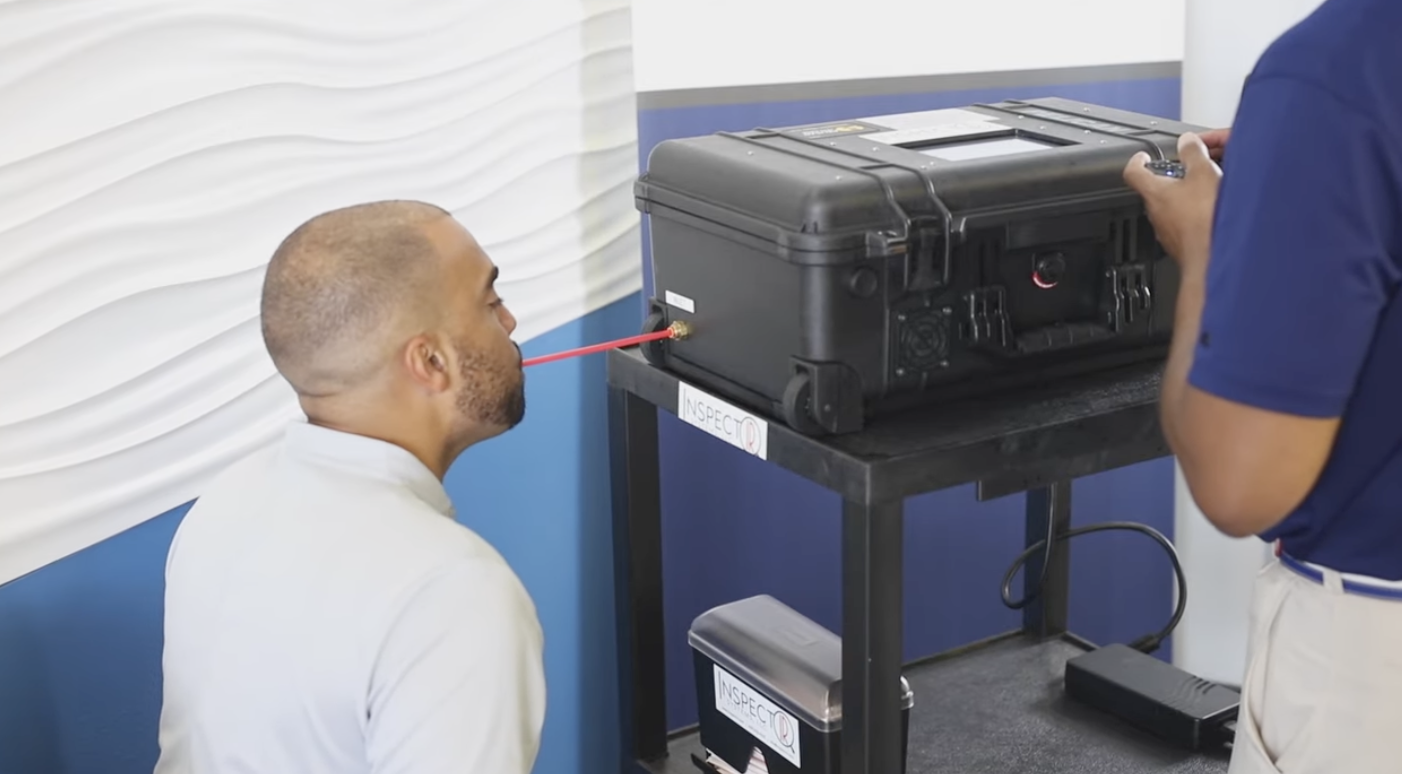
COVID-19 testing has become more convenient and accessible, but with the pandemic still causing more than 30,000 new infections in the U.S. on average each week, having more ways to detect SARS-CoV-2 can go a long way toward eventually containing COVID-19.
On April 14, the U.S. Food and Drug Administration took an important step in that direction by authorizing the first breath-based test for the disease. The test isn’t designed to serve as a confirmed diagnosis of COVID-19, but as a screening tool to alert people who might be infected, in under three minutes. Anyone testing positive on the InspectIR system would need to confirm that result with a PCR-based test.
Read More: How Wearing a Mask Can Help Protect You Even If No One Else Wears One
The test, developed by InspectIR Systems, based in Frisco, Tex., analyzes the gases in the breath and picks up the specific chemical signature of SARs-CoV-2 infection. Once infected, our cells produce a biological reaction that generates gases that are captured in the blood stream and transferred to the lungs and exhaled in the breath. Working with University of North Texas chemistry professor Guido Verbeck, InspectIR’s scientific team identified the breath print of SARS-CoV-2 by comparing the chemical profiles of breath samples from a few dozen people infected with COVID-19 and a similar number who were not. They found 41 differences that served as the basis for the test.
The technology relies on a piece of equipment about the size of a piece of carry-on luggage, that serves as a mobile chemistry lab and can perform the automated analysis in about three minutes. The FDA based its authorization on a study involving more than 2400 people, some of whom had COVID-19 symptoms and some who didn’t. The InspectIR test correctly identified 91.2% of positive samples, and 99.3% of negative tests. These results held even among people infected with the Omicron variant.
Tim Wing, co-founder and CEO of InspectIR, expects that doctors, hospitals, and mobile testing sites would use the instrument to provide quicker screening of people than either rapid antigen tests, which take about 15 minutes, or rapid PCR tests, which take a few hours. And because people simply breathe into a sample tube as opposed to having a swab inserted up their nose, he anticipates the test will be easier for health care providers to administer and for people to get.
The test needs to be overseen by a health care professional, so would have to conducted at a clinic or mobile testing site. The instrument does the chemical analysis, and the data is then analyzed by InspectIR, which reports the results back to the health care provider. The FDA authorization also requires that the positive results get reported to state health departments; while the positive results aren’t confirmed cases, they can be useful in helping states determine when and where cases might be increasing.
For now, because a health care professional oversees the testing, the instrument is likely to be limited to places where mass and quick testing are critical, such as workplaces and clinics. Tim Wing, co-founder and CEO of the company, says he has also received interested requests from travel industry groups, including cruise ship operators and hotels.
Read More: What to Do If You Test Positive for COVID-19 While Traveling
But a hand-held breathalyzer test for COVID-19 could have wider use in settings such as workplaces, school, and sports or entertainment venues, where its mobility could help test more people quicker. To that end, other researchers are working on a hand-held device similar to the ones law enforcement officers carry to detect alcohol among drivers. University of Texas at Dallas bioengineer Shalini Prasad developed one that connects to an app that provides results in about 30 seconds. Sotech Health, a Texas-based startup that licensed the technology, is currently working with the FDA to earn authorization for the device.
“My vision was to immediately get the device out to big hospitals where there were lines of people waiting to get tested,” says Craig Micklich, founder of Sotech. “But since it’s so small, the end goal is to have it used as a home diagnostic test. The idea is for the test to be affordable to the masses, including third world countries.”
John Redmond, co-founder and president of InspectIR, says the smaller instrument loses sensitivity and specificity in detecting SARS-CoV-2 signatures. “The level of resolution and sensitivity is night and day,” he says, in comparison with his company’s instrument.
The FDA will determine if that’s true, but for now, InspectIR is the only test that can analyze breath for COVID-19. The company expects to manufacture about 100 instruments a week, which clients can lease, over the coming months, and analyze about 20 tests an hour, with each test costing about the same as rapid antigen tests.
More Must-Reads from TIME
- How Donald Trump Won
- The Best Inventions of 2024
- Why Sleep Is the Key to Living Longer
- Robert Zemeckis Just Wants to Move You
- How to Break 8 Toxic Communication Habits
- Nicola Coughlan Bet on Herself—And Won
- Why Vinegar Is So Good for You
- Meet TIME's Newest Class of Next Generation Leaders
Contact us at letters@time.com